-
Configuration guide for Citrix Virtual Apps and Desktops™ workloads
-
Citrix SD-WAN Orchestrator™ on-premises configuration on Citrix SD-WAN appliance
-
-
ECMP load balancing
-
This content has been machine translated dynamically.
Dieser Inhalt ist eine maschinelle Übersetzung, die dynamisch erstellt wurde. (Haftungsausschluss)
Cet article a été traduit automatiquement de manière dynamique. (Clause de non responsabilité)
Este artículo lo ha traducido una máquina de forma dinámica. (Aviso legal)
此内容已经过机器动态翻译。 放弃
このコンテンツは動的に機械翻訳されています。免責事項
이 콘텐츠는 동적으로 기계 번역되었습니다. 책임 부인
Este texto foi traduzido automaticamente. (Aviso legal)
Questo contenuto è stato tradotto dinamicamente con traduzione automatica.(Esclusione di responsabilità))
This article has been machine translated.
Dieser Artikel wurde maschinell übersetzt. (Haftungsausschluss)
Ce article a été traduit automatiquement. (Clause de non responsabilité)
Este artículo ha sido traducido automáticamente. (Aviso legal)
この記事は機械翻訳されています.免責事項
이 기사는 기계 번역되었습니다.책임 부인
Este artigo foi traduzido automaticamente.(Aviso legal)
这篇文章已经过机器翻译.放弃
Questo articolo è stato tradotto automaticamente.(Esclusione di responsabilità))
Translation failed!
ECMP load balancing
Equal Cost Multi-Path (ECMP) groups allow you to group multiple paths with the same cost, destination, and service. The connections or session data is load balanced across all the paths in the ECMP group depending on the type of ECMP group. For example, consider a network with two WAN links between a branch and a data center having the same route cost. Traditionally, one of the WAN links would be active and the other remains dormant acting as a fallback link. With ECMP Groups, you can group these WAN links together and allow traffic to be load balanced through both the WAN links. ECMP load balancing ensures:
- Distribution of traffic over multiple equal-cost paths.
- Optimal usage of available bandwidth.
- Dynamic transfer of traffic to other ECMP member path, if a link fails. ECMP supports static routes on IPsec / GRE tunnels.
ECMP load balancing is supported on Virtual Paths and Intranet services. ECMP groups are defined at the global level. You can define a maximum of 254 ECMP groups in your network. The maximum number of ECMP eligible routes in an ECMP group depend on your appliance and license type. The following two types of ECMP groups are supported on Citrix SD-WAN™:
- Source/destination IP address: Networks where multiple clients try to connect to the same destination, the connections are load balanced across equal cost WAN links.
- Session: Networks where a single client is connected to a destination and multiple sessions are spawned. The session data is load balanced across equal cost WAN links.
To configure an ECMP group, in the configuration editor, navigate to Global > ECMP Groups. Provide a name for the ECMP group and select the type as Src/Dest IP address or Session as required.
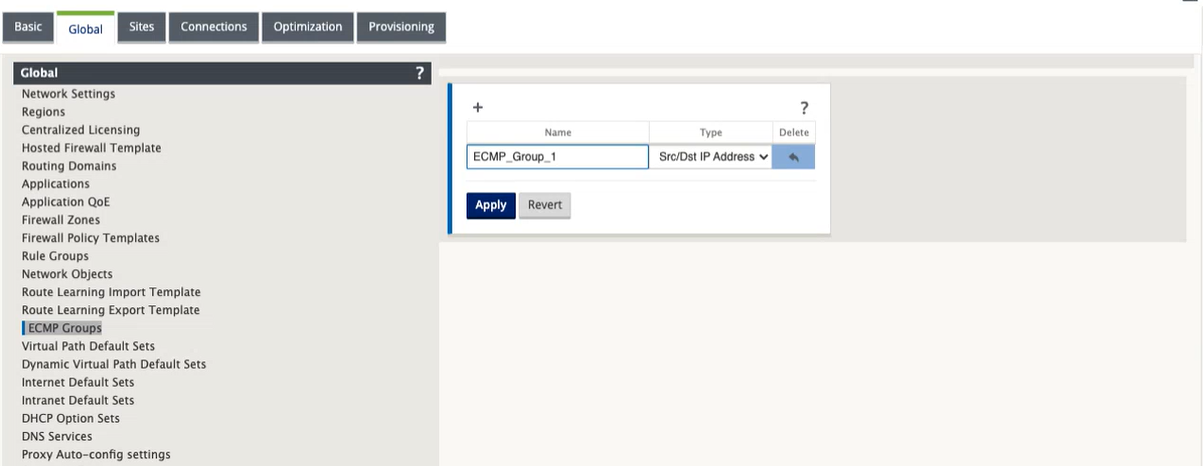
You can associate the ECMP groups to Virtual Path and Intranet Default Sets.
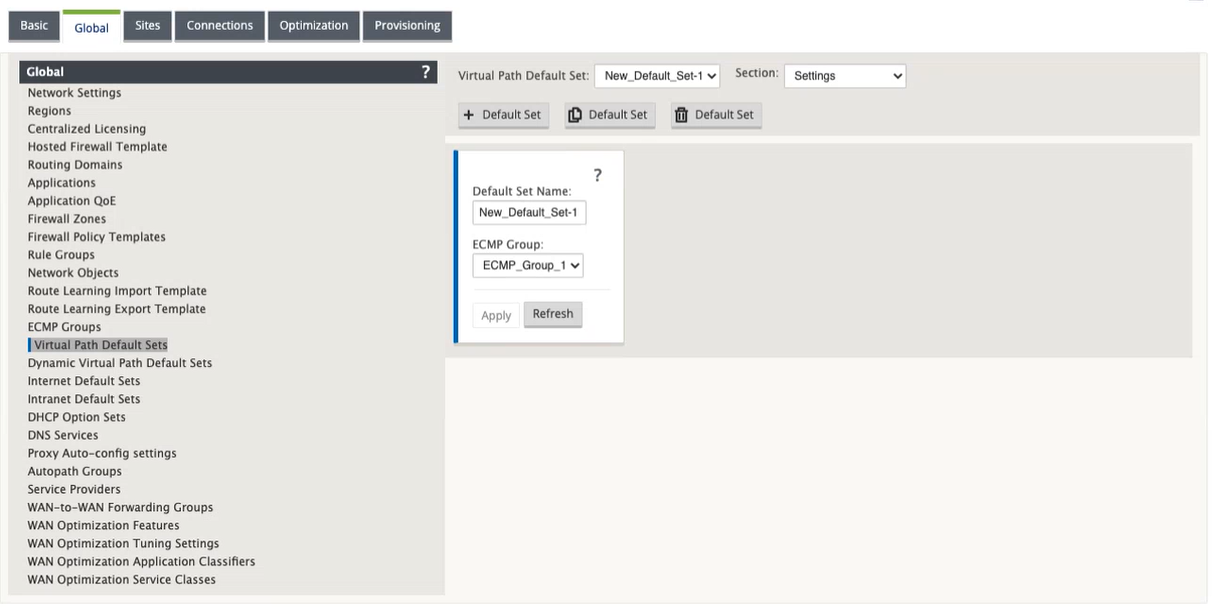
The following are the three ways to associate an ECMP group to the Virtual Path and Intranet services:
-
Inherit: The service inherits the ECMP group associated to the Default Set. If there is no ECMP group associated with the Default Set, the service is not associated to any ECMP group.
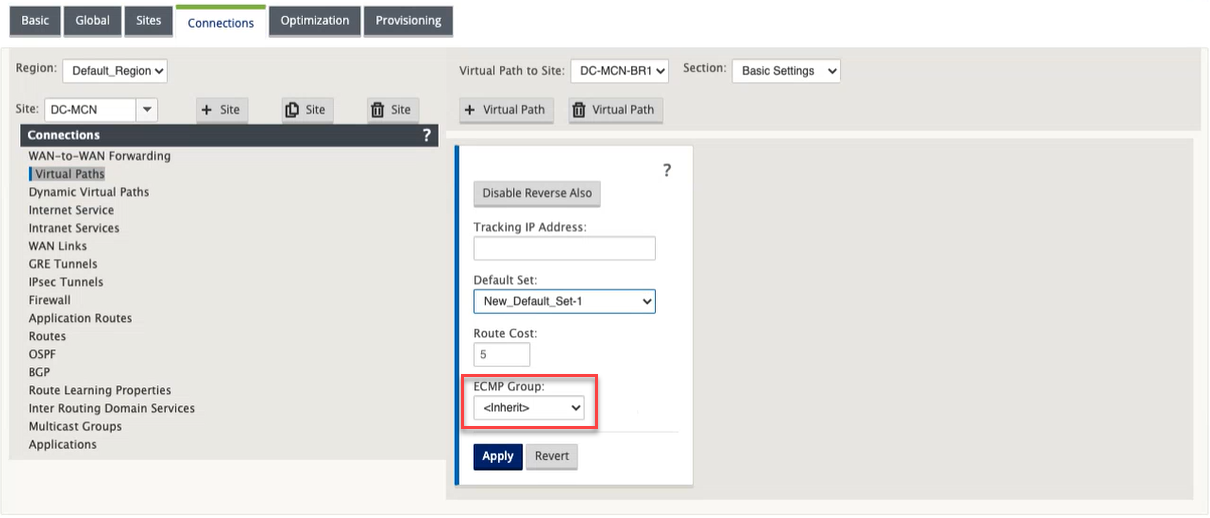
-
None: The service is not associated to any ECMP group even if the Default Set is associated to an ECMP group.
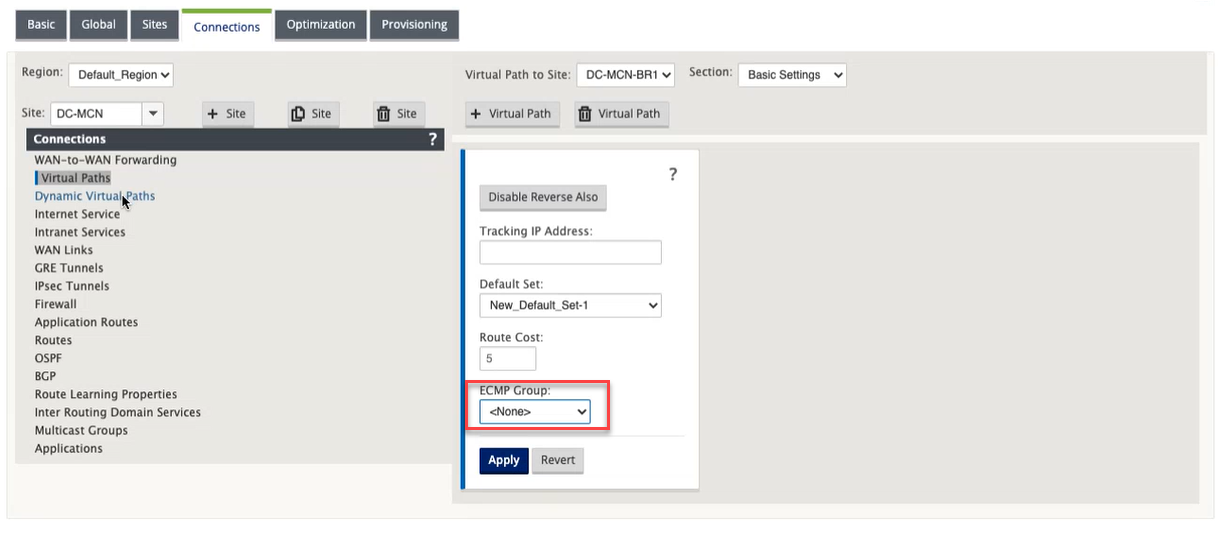
-
ECMP Group: Select one of the ECMP groups defined at the global level to associate the ECMP group with the service. The selected ECMP group overrides the ECMP group associated with the Default Set.
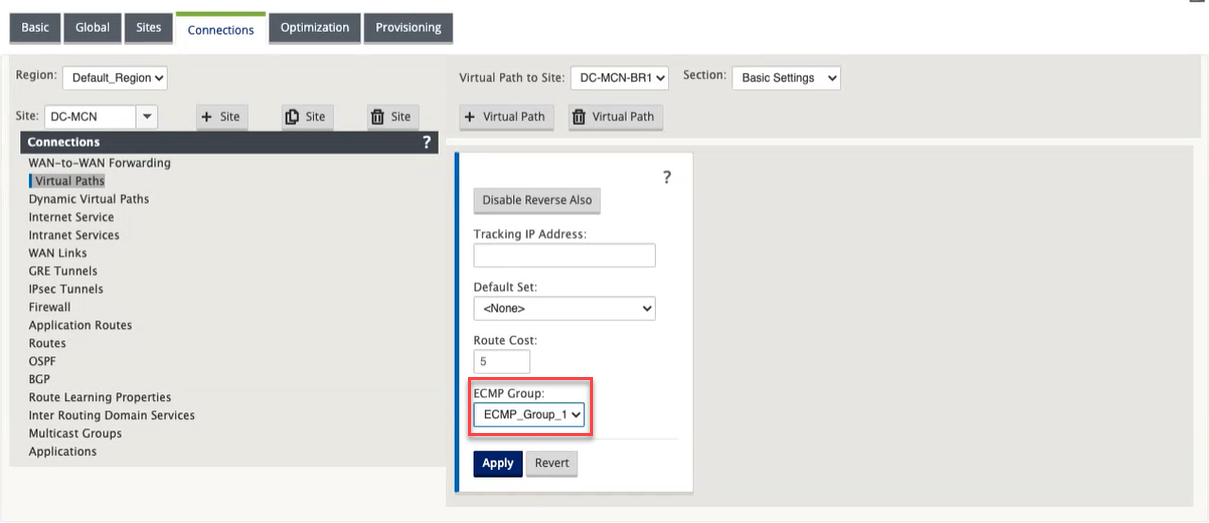
To monitor ECMP load balancing, in the SD-WAN UI, navigate to Monitoring > Statistics > Routes and filter the search results using the ECMP group name.
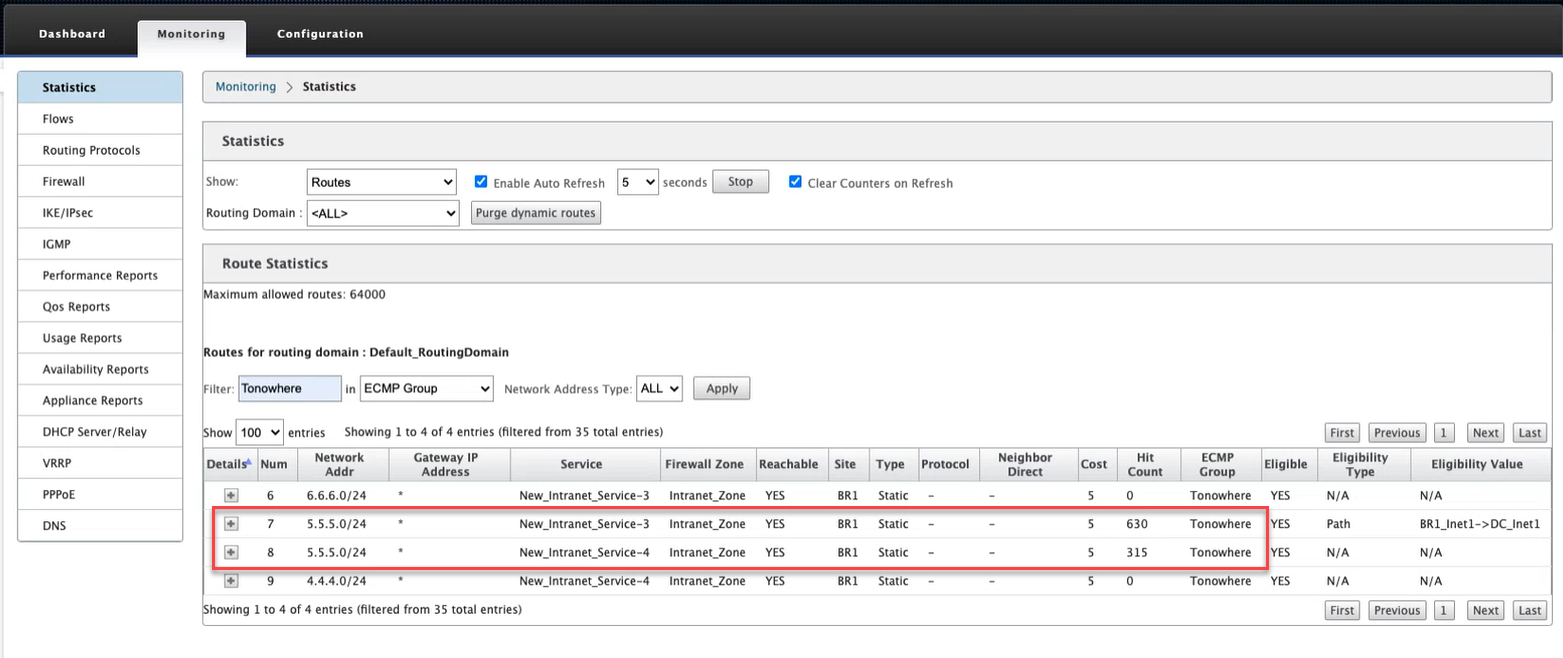
In the sample data, we see that all the routes within a service having a common ECMP group are part of that ECMP group. For example, 6.6.6.0/24 and 5.5.5.0/24 are in the ECMP Group Tonowhere. However, the traffic load is balanced between the services New_Intranet_Service-3 and New_Intranet_Service-4 that share a destination IP 5.5.5.0/24 and are associated to the same ECMP group.
Note
For the SIA and Zscaler service, you can load balance across two IPsec tunnel paths with ECMP (Active/Active).
The ECMP load balancing functionality is not supported on the following SD-WAN appliances:
- Citrix SD-WAN 1000 SE / PE
- Citrix SD-WAN 2000 SE / PE
- Citrix SD-WAN 4000 SE
Share
Share
In this article
This Preview product documentation is Cloud Software Group Confidential.
You agree to hold this documentation confidential pursuant to the terms of your Cloud Software Group Beta/Tech Preview Agreement.
The development, release and timing of any features or functionality described in the Preview documentation remains at our sole discretion and are subject to change without notice or consultation.
The documentation is for informational purposes only and is not a commitment, promise or legal obligation to deliver any material, code or functionality and should not be relied upon in making Cloud Software Group product purchase decisions.
If you do not agree, select I DO NOT AGREE to exit.